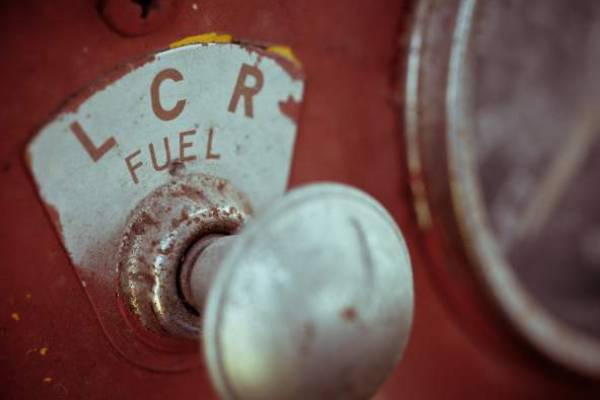Shaping the future of oil and gas project management.
The oil and gas industry is a cornerstone of the global economy, providing essential energy resources to power industries, transportation, and households. However, the development of oil and gas projects is fraught with significant challenges, ranging from environmental concerns to technological complexities and geopolitical risks.
To navigate these challenges, the industry continually innovates, integrating new technologies to enhance efficiency, safety, and sustainability. This article explores the primary challenges in oil and gas project development and the innovative solutions that are being implemented to address them.

Major Challenges in Oil and Gas Project Development
- Environmental Concerns and Regulatory Compliance
One of the most pressing challenges in the oil and gas sector is managing environmental impact and adhering to stringent regulatory requirements. Projects often face scrutiny over their potential effects on ecosystems, water resources, and air quality.
- Air and Water Pollution: Emissions from drilling operations and potential spills pose significant risks to air and water quality. Managing these pollutants is crucial to minimize environmental damage.
- Regulatory Compliance: Navigating the web of local, national, and international regulations requires meticulous planning and ongoing monitoring to ensure compliance.
- Biodiversity Impact: Oil and gas operations can disrupt local wildlife and habitats, requiring careful impact assessments and mitigation strategies.
- Technological Complexity
The extraction of oil and gas involves highly complex technologies that need to operate in harsh and often remote environments.
- Deepwater Drilling: Accessing oil and gas reserves beneath the ocean floor requires advanced drilling technologies that are capable of withstanding extreme pressures and temperatures.
- Unconventional Resources: Extracting oil and gas from a variety of unconventional sources, such as shale formations or tar sands, involves specialized techniques like hydraulic fracturing and horizontal drilling.
- Aging Infrastructure: Many oil and gas facilities operate with aging infrastructure that requires constant maintenance and upgrades to ensure safety and efficiency.
- Geopolitical and Economic Risks
The oil and gas industry is deeply intertwined with global politics and economics, making it vulnerable to various external risks.
- Market Volatility: Fluctuations in oil prices can significantly impact project viability and profitability, leading to delays or cancellations.
- Geopolitical Instability: Projects in politically unstable regions face risks of conflict, expropriation, and disruptions, which can halt operations and endanger personnel.
- Supply Chain Disruptions: Global supply chains for equipment and materials are susceptible to interruptions from political events, natural disasters, and logistical challenges.
- Health and Safety Risks
Ensuring the health and safety of workers is paramount in the oil and gas industry, given the hazardous nature of the work.
- Operational Hazards: The risk of explosions, fires, and toxic exposure requires rigorous safety protocols and training.
- Remote Locations: Many projects are located in remote areas with limited access to emergency services, complicating response efforts during accidents.
- Worker Health: Long shifts and challenging working conditions can affect workers’ health and well-being, requiring robust occupational health programs.
Innovations in Oil and Gas Project Development
To effectively address these challenges, the oil and gas industry is embracing a range of innovative solutions that enhance efficiency, safety, and sustainability.
- Advanced Drilling Technologies
Technological advancements in drilling have revolutionized the extraction process, making it more efficient and less environmentally invasive.
- Directional Drilling: Directional and horizontal drilling techniques allow operators to access reserves more precisely, reducing the surface footprint and minimizing environmental impact.
- Automated Drilling Rigs: Automation and remote operation of drilling rigs increase precision and safety while reducing the need for human intervention in hazardous conditions.
- Enhanced Recovery Techniques: Techniques such as CO2 injection and thermal recovery improve the extraction rates of existing wells, extending their productive life.
- Digital Transformation
Digital technologies are transforming the oil and gas sector, enabling better decision-making and operational efficiency.
- Big Data and Analytics: Advanced data analytics provide insights into reservoir performance, optimize production, and predict equipment failures, reducing downtime and maintenance costs. Investing in project management software oil and gas will enable you to keep on top of your data and analytics so you can respond quickly to any issues.
- Digital Twins: Creating digital replicas of physical assets allows for real-time simulations and optimizations, improving project planning and management.
- IoT and Remote Monitoring: Internet of Things (IoT) devices and sensors enable real-time monitoring of equipment and environmental conditions, enhancing safety and operational efficiency.
- Enhanced Health and Safety Measures
Improving health and safety is a continuous priority, with new technologies and practices enhancing worker protection.
- Wearable Technology: Wearable devices monitor workers’ vital signs and environmental conditions, alerting them to potential hazards and improving emergency response.
- Safety Drones: Drones conduct inspections and monitor remote sites, reducing the need for human presence in dangerous areas and improving safety oversight.
- Robotic Automation: Robots perform high-risk tasks, such as inspections and maintenance in hazardous environments, minimizing human exposure to danger.
- Collaboration and Partnerships
Collaborative efforts and partnerships are essential for driving innovation and addressing complex challenges in the oil and gas sector.
- Industry Consortia: Collaborative platforms allow companies to share knowledge, pool resources, and develop new technologies collectively.
- Academic and Research Partnerships: Partnerships with academic institutions and research organizations foster innovation and provide access to cutting-edge research and expertise.
- Public-Private Partnerships: Collaborating with government agencies and NGOs helps to address regulatory challenges, improve sustainability practices, and enhance community engagement.
Conclusion
The development of oil and gas projects is a complex and challenging endeavor, requiring a balance of technical expertise, strategic planning, and innovative thinking. By embracing advanced technologies, prioritizing sustainability, enhancing safety measures, and fostering collaboration, the industry can navigate these challenges and continue to play a vital role in meeting global energy needs. The ongoing evolution of the oil and gas sector, driven by innovation and adaptability, promises a more efficient, sustainable, and resilient future.
 TechManik Best Cheap Android Phones and Tablets | Android Apps
TechManik Best Cheap Android Phones and Tablets | Android Apps 

